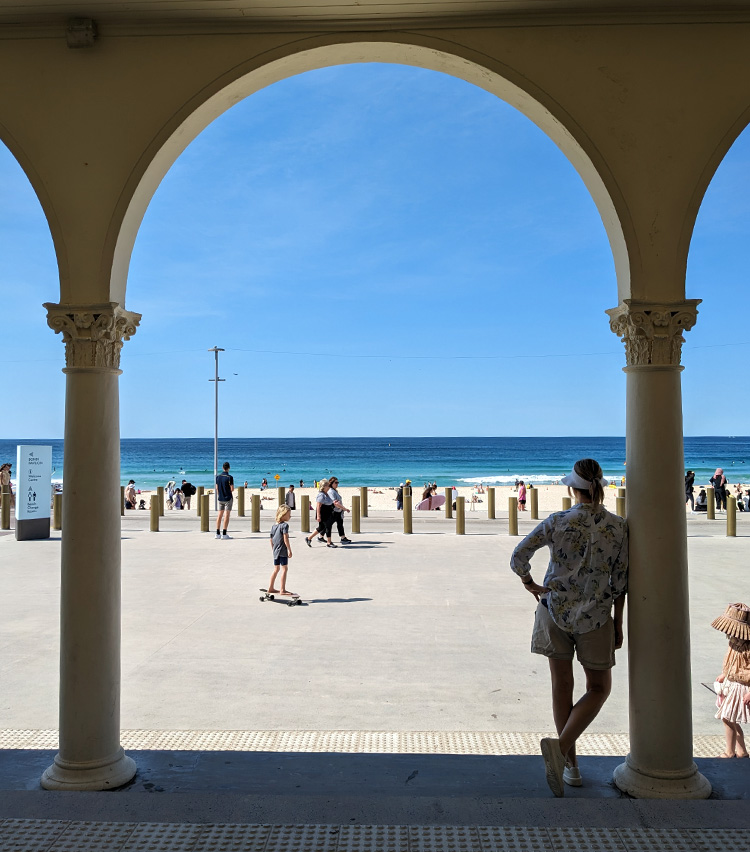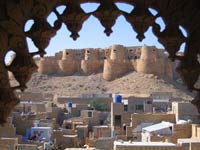Framing the World: The Art of Composition in Travel Photography
[ Back to Photography Index ]
In the realm of travel photography, capturing breathtaking landscapes and iconic landmarks is only part of the equation. Equally important is the art of composition – how we frame our shots. No, we are not talking about putting an actual physical frame around the photo, but composing the shot so that there is a virtual frame created by the objects in the photograph.
Framing is used to convey a sense of perspective, depth, and emotion. Framing is about more than just finding the perfect angle; it's about creating visual narratives that transport viewers to the heart of our travel experiences.
 Bondi Beach, Sydney
Bondi Beach, SydneyUse Natural Elements
One of the most powerful techniques in framing is using natural elements to frame your subject. Whether it's framing a majestic mountain peak with overhanging branches, or capturing a bustling city street through an arched doorway, using elements like trees, buildings, or even people can add depth and context to your photos. This technique not only draws the viewer's eye to the main subject but also creates a sense of immersion, as if they are peeking into a scene unfolding before them.
Pay attention to lines and symmetry
Another aspect of framing is paying attention to lines and symmetry. Leading lines, such as roads, paths, or fences, can guide the viewer's gaze through the image, creating a sense of movement and flow. Similarly, symmetry can add balance and harmony to a composition, whether it's the reflection of a building in a still pond or the repetition of patterns in a bustling marketplace. By consciously incorporating these elements into your photos, you can create images that are both visually striking and emotionally resonant.
Make the most of Negative Space
Framing is not just about what's in the picture, but also what's left out. Sometimes negative space – the empty areas around the main subject – can be just as important as the subject itself. By carefully composing your shots to include negative space, you can create a sense of tranquility and focus attention on the main subject, allowing it to stand out against the background.
Conclusion
Ultimately, mastering the art of framing takes practice, patience, and a keen eye for detail. But by paying attention to composition techniques such as using natural elements to frame your subject, incorporating lines and symmetry, and embracing negative space, you can elevate your travel photography to new heights. So, next time you're out exploring the world with your camera in hand, remember to look beyond the obvious and frame the world in a way that tells your unique story.
 This photograph is from inside an old house in Jaisalmer India, using part of the house in the foreground to frame the fort in the distance.
This photograph is from inside an old house in Jaisalmer India, using part of the house in the foreground to frame the fort in the distance.
Do you have feedback, a comment or correction? Let us know

